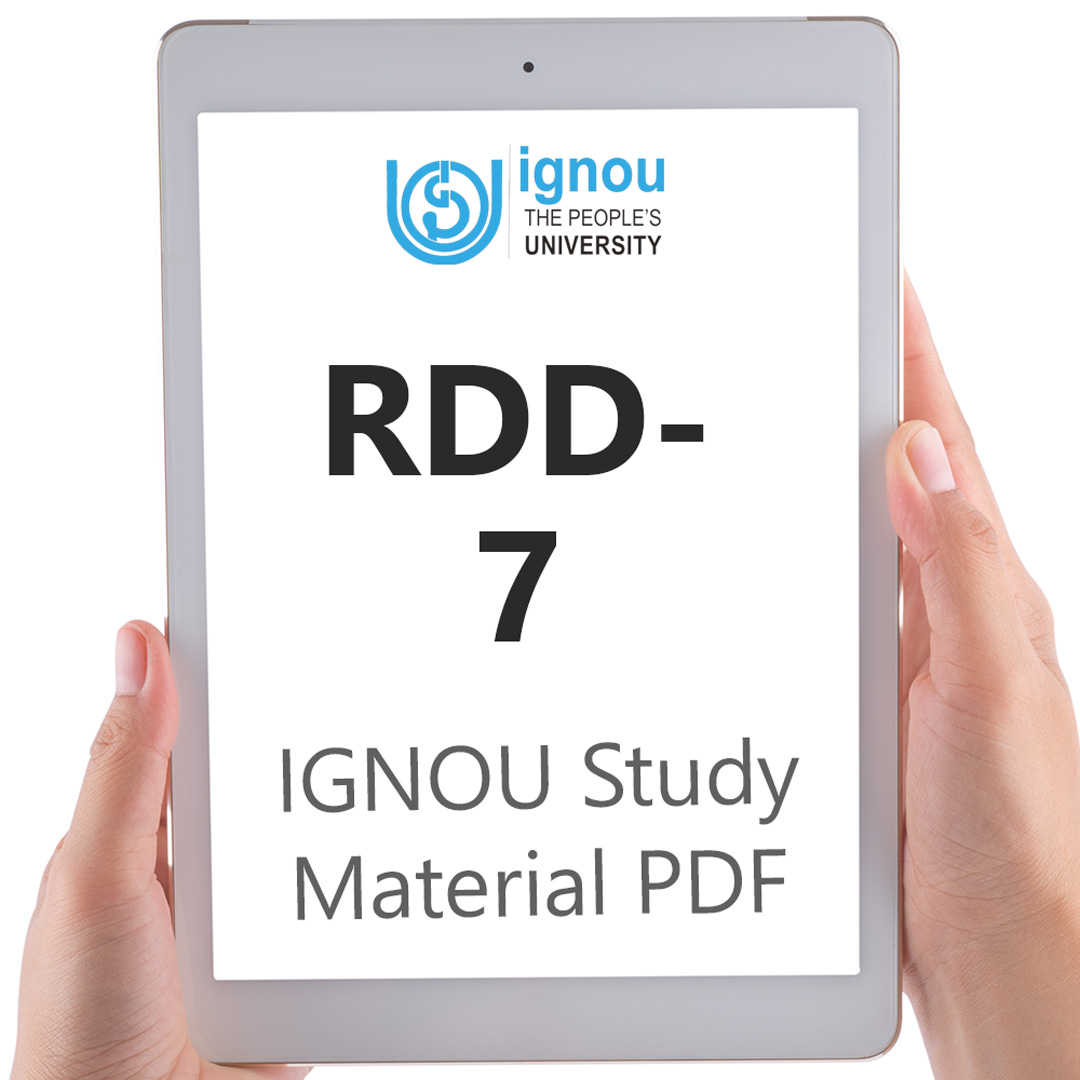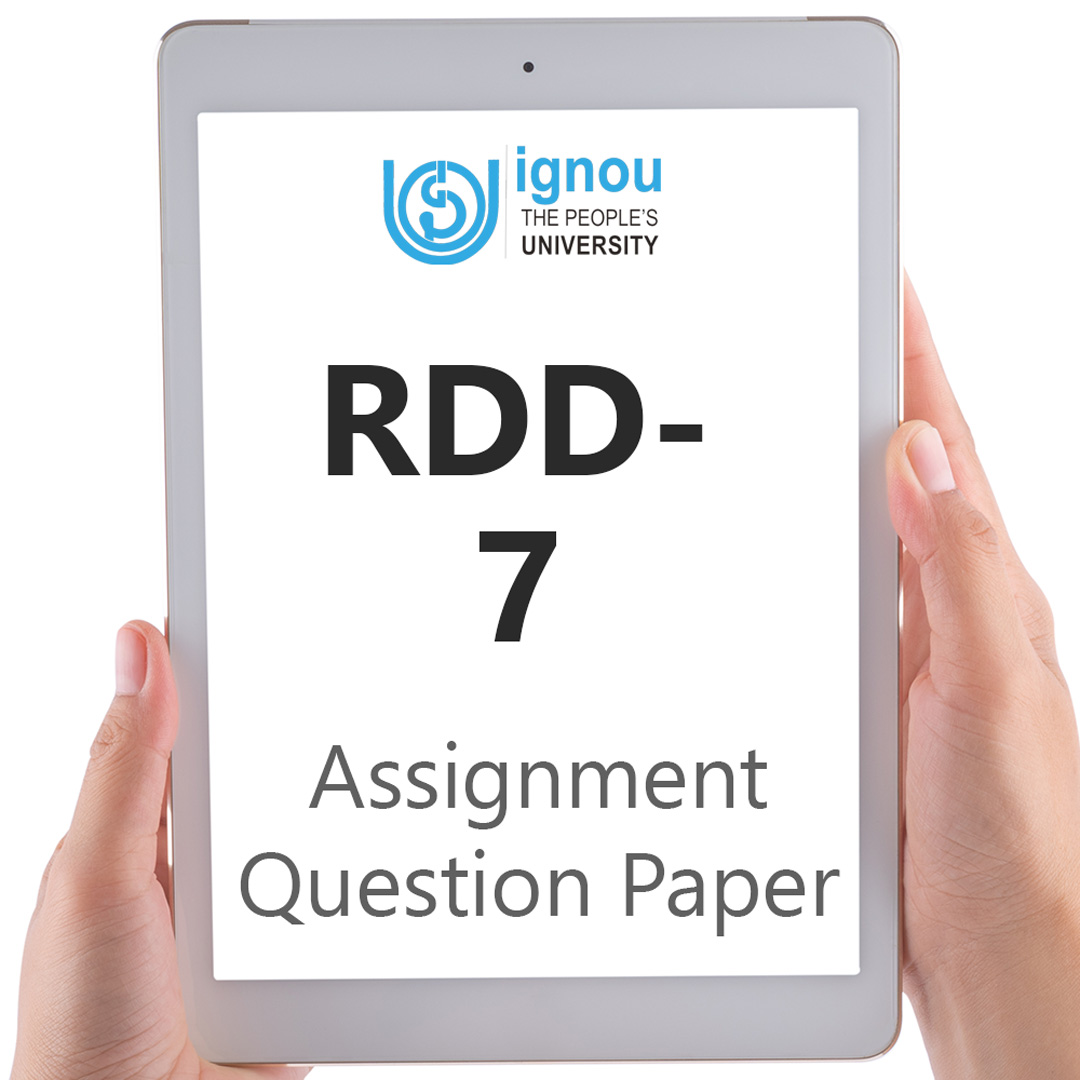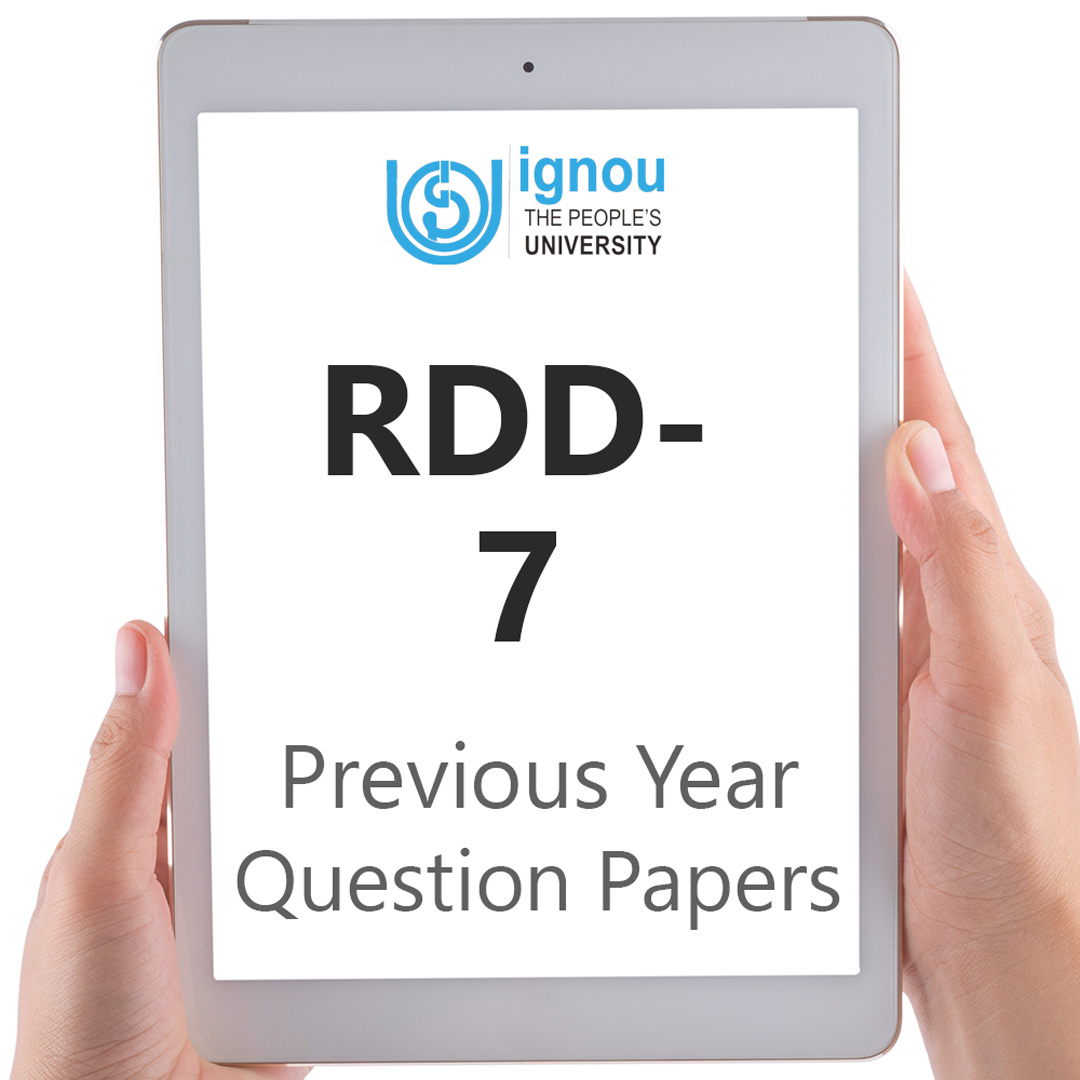If you are looking for RDD-7 IGNOU Solved Assignment solution for the subject Communication and Extension in Rural Development, you have come to the right place. RDD-7 solution on this page applies to 2022-23 session students studying in MARD, PGDRD courses of IGNOU.
RDD-7 Solved Assignment Solution by Gyaniversity
Assignment Code: RDD-7/AST/TMA-7/2022-2023
Course Code: RDD 7
Assignment Name: Communication and Extension in Rural Development
Year: 2022-2023
Verification Status: Verified by Professor
Long Answers Questions Maximum Marks: 40
Attempt any One of the following.
Q1) What do you understand by communication Strategy? Describe the three basic steps involved in the preparation of ‘Management Plan’ for an Effective Communication Strategy.
Ans) Communication Strategy: A set of channels and messages that are meant to reach a certain audience and help reach a certain goal. Communication Strategy needs to have two important things to say about it (C.S.). A communication strategy is a group of approaches, messages, methods, and channels that work together to reach a specific communication goal or objective.
For making a communication strategy, there are four things we need to know
The need or problem that needs help with communication.
Who is watching (through audience analysis).
Bow to set the point or goal of the communication.
How to come up with a plan.
Choice of Communication Approaches/Methods: There are basically four ways to talk to someone, and most people use them alone or in different ways. Some of these are telling, teaching, convincing, and entertaining. Take the spread of a disease that is expected to kill the rice crop as an example. We can choose to "inform" the farmers about the spread of the disease in one way or another. We can go a little further by taking a combination of approaches. For example, we could not only tell the farmers about the disease, but also "educate" them about the damage it could cause and "persuade" them to choose and use the right pesticides.
In the same way, there are many ways to communicate, which can be roughly put into three main groups. Individual, Group, and Mass Communication are some of these.
Selection of Communication Methods: The audience, approach, and message(s) to be sent have a lot to do with the choice of communication method. Methods are usually chosen based on who the audience is, what the message is, and how useful each method is.
The planner can choose how to communicate based on the following five rules:
Write down all the ways you can talk to someone, and then cross out the ones that don't work or aren't possible.
Think about how each method is used and what kind of message it sends.
Get information about how well different methods work.
Find out how each method compares in terms of cost-effectiveness.
Whenever you can, use more than one method.
Communication Management Planning (CMP): In Communication Management Planning (CMP), you need to figure out who will do what and when. It is also important to set up a good management information system that can give planners regular information about people, money, and logistics. Since the CMP is the most important link between strategy and actions, it is important to think carefully about the following steps:
Management Planning: Communication planners have to schedule and coordinate a lot of different communication activities, which is one of the hardest things they have to do. Planners must set up communication tasks in a way that makes sense, estimate the time and resources needed to do the task, and keep a close eye on the schedule as the tasks happen. Communication planners have to schedule and coordinate a lot of different communication activities, which is one of the hardest things they have to do. Planners must set up communication tasks in a way that makes sense, estimate the time and resources needed to do the task, and keep a close eye on the schedule as the tasks happen.
There are at least 3 scheduling techniques:
The work plan for each month.
The effect of time chart.
The plan for the network (PERT).
Part of the planning process is coming up with a well-thought-out plan for communication, as well as a schedule for activities and events that will happen during implementation. A budget must be made for the resources needed to do the activities. When making these estimates, it's important to think about how much money and people will be needed to finish the tasks. This way, you can balance the three resources—money, people, and time—and come up with a mix that can be done with the resources you have.
Manpower Training: When we make a communication plan, the people who will carry it out must also be ready and able to do the activities as planned. So, an evaluation of the people who are available and the tasks that need to be done. After the people who will carry out the plan have been chosen, their tasks and training needs should be figured out. Based on this, training should be given to those who need it. By doing this, everyone involved in putting the plan into action is ready and able to do the job they were given.
Implementation: At this step, you should do everything that needs to be done to reach the planned communication goals. The people who are in charge of putting the communication activities into place should always know what needs to be done, and any problems they run into should be fixed quickly by keeping a close eye on the activities.
Summative Evaluation: Evaluation is an important part of figuring out how things are going and making decisions. It helps people choose between different practises and prove that a programme is getting better.
When it comes to communication activities, the goal of programme evaluation is to:
A key part of managing projects that helps keep track of how well they are going,
a tool to help manage programmes and resources better and
a way to make policy by looking back at what has happened in the past.
communication activities.
So, the goal of programme evaluation is to get information that can be used to change and improve communication strategies. Not only does it focus on communication goals and strategies, but it also helps people figure out how the results of a communication programme relate to its goal, outputs, inputs, and costs. The evaluation should be used to help set new communication goals and come up with new communication strategies.
Medium Answers Questions Maximum Marks: 15 each
Attempt any Two of the following:
Q1) Describe in brief, the four main characteristics of Communication.
Ans) The chief attributes of communication are:
Communication happens all the time.
Communication is an individual act.
Communication goes back and forth.
Communication can't be taken back.
It is continuous because people never stop talking to each other and because we are always either sending or receiving messages. It's clear that we do not always talk or write. Still, we talk to each other a lot without being aware of it. We might be watching TV or listening to music. Here, you tell yourself whether the music is pleasant or not, or whether the TV show is good or bad. Or, as we walk, we might be looking at a poster. We look at the sign and think about what it says. We might see people on the street, animals, new cars, or things in store windows, and we might respond to them either actively or passively.
All of these answers are ways that people talk to each other. This is called interpersonal communication. The source here is the poster on the wall, the people walking the streets, the goods in the store windows, etc. What these things mean to you or don't mean to you is the message. The channels are your eyes and ears, and you are the one who gets the message. So, every time we interact with something we see, hear, touch, smell, or taste, we are communicating, and there is no time when we are not communicating in this way. Because of this, communication is always going on, whether we are consciously talking or listening to someone else or consciously or unconsciously interacting with our environment.
Communication is personal because what we make of the messages or what meaning we get from them doesn't depend on what the messages are about, but on how we interpret them. This depends on our mood, our history, our goals, and other things. "Come here," says A, the boss, to B, the clerk. Depending on B's mood, background, etc., this could be a command, a request, or just a statement. B could do what A tells him to do in their office. "Come here" may seem like an insult to B if A says it to him when he is with his friends outside of his office. So, what a person thinks communication means is a very personal thing. Depending on time, mood, place, etc., the same message can mean different things to the same person.
Communication is circular because it's hard to tell where it starts and where it ends. When you say "good morning" to B, you may have started to talk to him or her. But B may have smiled at you long before you said hello, which is the same as starting a conversation. This is how communication is not only personal and ongoing, but also how it goes in a circle.
Communication is irreversible because once someone says or writes something and it gets to the other person, it can't be taken back. You can't change what you've already said. You can take back the note you wrote, but the person who got it has already read it and understood what it said. Once a message leaves the sender and gets to the receiver, it can't be sent back.
Q2) Describe in brief, the meaning and general objectives of Extension.
Ans) The main goal of extension is to improve the lives of people who live in rural areas. It aims to help the group as a whole grow and improve. I.e., the growth of the human population in economic, social, moral, and spiritual ways. The main goal of extension is to improve the economic, social, and cultural lives of rural people through education.
The main goals of an extension are:
To help people find and analyse their problems and figure out what they need.
To teach people how to be leaders and help them get together in groups to solve their problems.
To share research information that is important for business and everyday life in a way that people can understand and use.
To help people get and use the resources they already have and the resources they need from outside.
To get feedback and pass it along so that management problems can be solved.
List the general goals in terms of developing knowledge, attitudes, and skills. Now we'll talk about each of them:
Knowledge Development: Intelligent behaviour is when you act in a way that helps you reach your goal or objective. Harrison said that people should be taught because:
Learning how to find and use information, putting goals into the groups to which they belong, organising information, and being aware of how things fit together.
Getting better at reasoning from the simple and concrete to the more complex and abstract.
Getting better at making connections and generalisations.
Getting better at reading and solving problems; and
Learning should be fun, and people should want to keep learning.
Attitude Development: Attitude has been described as a learned, emotionally driven tendency to feel consistently good or bad about a person, thing, or idea. An extension educator should try to connect new information to the clients' past experiences, attitudes, and values by focusing on the following things:
Learners who have had good experiences in the past are better able to figure out how different things will work together in the future.
Studying a person's cultural values can help you figure out how they will react to a situation.
Attitudes are hard to change quickly, even if you have the right information.
If you try to change someone's behaviour without changing their beliefs, needs, or values, the change will only last for a short time.
Almost any form of communication could be used to change an adult's attitude, but enriched messages that come from direct, purposeful experiences are likely to be the most effective.
Skill Development: Most of the time, this goal isn't given enough attention when planning a programme. It is the job of the extension worker to figure out what skills are needed to solve the problems that have been found. For a skill to be learned, both the learner and the teacher have to keep working at it.
Different groups would have different specific goals for extension. For farmers, the main goal would be to teach them about scientific technology and help them use it to increase agricultural production. For rural women, the goal would be to educate them so that they can be more efficient at housework and other things they do. Even though the specific goals are different, the main goal of extension is still to improve the quality of life for people in rural areas.
Short Answers Questions Maximum Marks: 6 each
Attempt any Five of the following:
Q1) Selection of Communication Methods
Ans) The audience, approach, and message(s) to be sent have a lot to do with the choice of communication method. Methods are usually chosen based on who the audience is, what the message is, and how useful each method is.
The planner can choose how to communicate based on the following five rules:
Write down all the ways you can talk to someone, and then cross out the ones that don't work or aren't possible.
Think about how each method is used and what kind of message it sends.
Get information about how well different methods work.
Find out how each method compares in terms of cost-effectiveness.
Whenever you can, use more than one method.
Q2) Psychological Barriers in Communication
Ans) Psychological or emotional factors play a big role in how well people can talk to each other. Things like motivation, fear, love, and jealousy can change how someone sees and reads a message. The way the receiver feels about himself, the sender, and the message itself will also affect how the message is seen.
For example, a person's negative feelings about family planning norms could make it hard for them to understand the right message about family planning. Other psychological factors, like a person's tendency to judge things too quickly, being distracted by personal or family problems, having bad judgement, or forgetting things because they don't remember them well, will make it hard to communicate effectively.
Q3) Agricultural Extension
Ans) The goal of Agricultural Extension is to make people more productive so that the rate of agricultural production can go up quickly. It aims to teach farmers the skills they need to understand better ways to run their farms, to give them up-to-date information about better ways to do things in a way that is easy for them to understand and fits their level of literacy and knowledge, and to encourage them to be open to new ideas, change, adoption, and development.
It is a process that helps farmers figure out where they are now and what they think will happen in the future. It also helps farmers get better at farming and making good decisions.
Q4) ‘Transmission of Culture’ as a Function of Communication
Ans) The purpose of the mass media and communication is to pass on information, values, and rules from one generation to the next or from the people already living in a society to newcomers. They help people fit in with the rest of society. It helps to bring people together and strengthen social cohesion by giving them a wide range of social norms, values, and shared experiences to talk about. But the transmission function could become a dysfunction if it makes mass society less personal. Mass media may also make a mass society and lessen the number of different subcultures. Because of mass media, we tend to speak, dress, think, act, and react more and more the same way.
Q5) Farmers ‘Training and Education Programme
Ans) In 1966-67, a programme called the Farmers' Training and Education Program was started. This programme was paid for by the government. The programme was started with five high-yield varieties as a test. In addition to the high-yielding varieties programme, the scheme was also made to cover ongoing priority programmes like SFDA, MFAI, DPAP, etc.
Training programmes were set up for the farmer, the farm women, and the farm youth as part of the scheme. The training programmes covered areas of agricultural development like cereals, commercial crops, pulses conservation, water and land use, soil conditions, micronutrients, foliar application of fertilisers, and agricultural tools and machinery. A lot of attention was also paid to related topics, such as educating consumers about how good the high-yield varieties of cereal are and how to store food grains at home.





